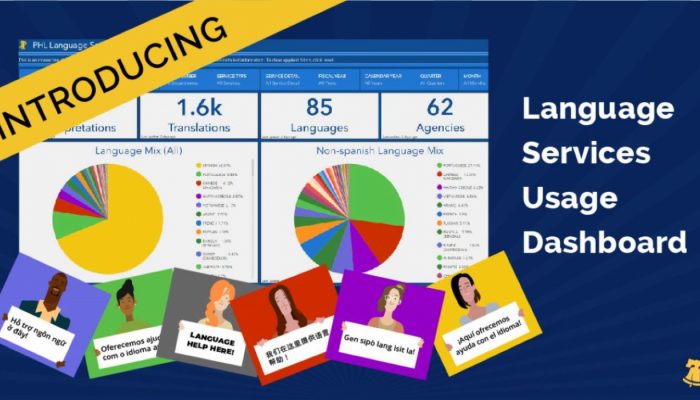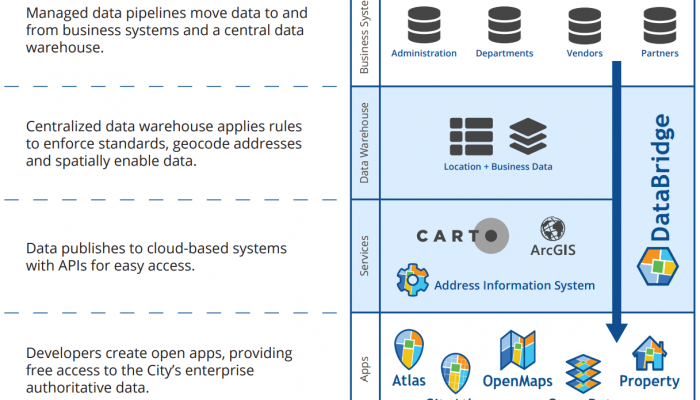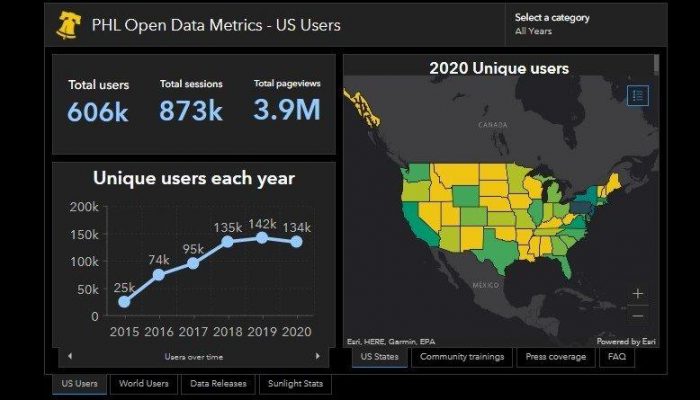For the first time, the Office of Immigrant Affairs (OIA) released an interactive dashboard that displays the language services used by residents when accessing City programs.
How was this dashboard created?
The data illustrated in the Language Services Usage dashboard was collected by the Language Access Philly Program during the last fiscal year, from July 1, 2021, through June 30, 2022. To create the dashboard and share its data, OIA partnered with CityGeo, a team within the Office of Innovation and Technology (OIT) that leverages data and technology to improve government efficiency and support equity-focused initiatives. OIA also publicly shared the data for download and provided metadata through the City’s Open Data Program, which allows individuals outside of government to use this data in their own analysis. OIA will continue to release updates of the dashboard and the data for researchers, journalists, and others interested in this information at the end of each fiscal year.
Who should use the dashboard?
The data is meant to serve as a resource for researchers, community organizations and others interested in trends based on the language services provided by public employees when interacting with the linguistically diverse public. Language services include telephonic interpretation, in-person or remote professional interpreters, and document translation. Moreover, the dashboard invites Philadelphians to get familiar with the variety of languages used in the City. The interactive filters allow for a closer look into departments’ usage of contracted translation and interpretation services for a given language, and the pie charts show the overall distribution of language accommodations. This dataset will also be used by City departments to raise awareness of the translation and interpretation services available to employees when interacting with the public. The initiative will not only help public agencies build capacity at trainings, but it will also increase transparency of the data reported by vendors and agencies to the Office of Immigrant Affairs.
We invite residents to use the dashboard to assist in continuous assessment of language needs in Philadelphia. Through an equity lens, we also want to encourage those who use this dashboard to think beyond a hierarchal approach – while there are some languages that have been requested more often, all language needs are equally important.
So, what’s in the dataset?
The dataset includes a detailed list of translation and interpretation transactions, including the department who initiated the request, the language requested by the city employee, the vendor providing language supports, and a brief description of the service provided.
Please note that the data reported is limited to contracted professional services. The information provided is a compilation of City-wide language access data based on reports from vendors who were paid for offering professional services to the City of Philadelphia in fiscal year 2022 (7/1/21 – 6/30/22), including: GLOBO, Language Line Solutions, Language Service Associates, Nationalities Service Center, Powerling, and United Language Group.
For important notes about the dataset, please refer to the “About this Dashboard” tab in the language services usage dashboard.
Why do some City departments have no data or minimal reports?
Each City department allocates its own budget for translation and interpretation. However, Offices with smaller budgets may be covered under larger departments, such as the Managing Director’s Office. Moreover, some services might be channeled through other programs, like emergencies handled by 911 or inquiries through the 311 service. The dataset will reflect the department who was billed for the contracted work.
What is the difference between translation and interpretation?
Translation is written, interpretation is spoken. If you are looking for translated documents, filter for: “translations.” Telephonic, video, and in-person interpretation services are compiled under “interpretation.”
Next Steps?
OIA will continue to release annual updates of the dashboard and data.




